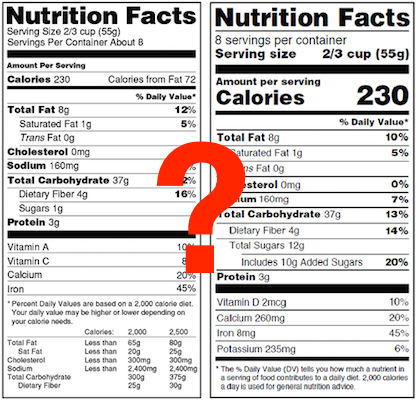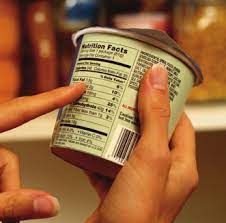Tips to Understand FSMA Rules and Lot Tracking
Small to medium sized food businesses have a lot to juggle. Heck, every business does. But, there’s one key difference: food business owners have to be extra careful about food safety. It’s no longer “Don’t worry about it - I’m making a small batch!” – It’s “a stranger in Florida is buying this off a grocery store shelf and hopefully he won’t fall ill from my mismanagement.”
Foodborne illness is no joke.
It can happen to any food business - grocery stores, restaurants, food manufacturers, farmers, and even home bakers. Organizations of every size can negatively impact people’s lives through their poor manufacturing practices.
When foodborne illnesses are discovered, they’ll most likely result in a product recall. This is where manufacturers pull the affected product from store shelves, resulting in significant costs and lost revenue and severely damaging any remaining customer loyalty. It’s happened to many large companies in recent years.
What’s happening to prevent foodborne illness?
Introducing the Food Safety Modernization Act (FSMA). FSMA is the first overhaul of any such protection system since 1938. Um, what?
Over the next few years, FSMA will start impacting farm and food businesses of every size. To give you an idea, here’s the roll-out:
- Small businesses with less than 500 employees need to comply by January 1, 2018.
- Very small companies (less than $1M in sales) need to comply by January 1, 2019.
- All other businesses are past the complying date. That means get to work!
Some farm operations may be exempt, however all food manufacturers will eventually have to comply by the dates stated above.
Don’t just brush this off and say “whatever.” Food safety is nothing to joke about. There are several reasons your business should take complying with FSMA seriously.
First off, these plans are required for third-party certifications. The certifications are important because they’re required to get into retailers like WalMart, Costco, Whole Foods, and Kroger. That’s a pretty good reason, huh?
That means some of the largest retailers you dream of getting into require you to have this plan in place.
So does the American government. If the FDA or your State Health Department inspector drops in for a surprise inspection (and believe us, they do), you’re required to demonstrate your food safety plan and many times you have to facilitate a mock recall too.
That means being able to identify the exact batch where an infected ingredient was used and where that finished product went that used the recalled ingredient. This process is complicated, but we’ll walk you through every step in this article.
What is FSMA?
The focus of FSMA is on prevention of a potential food safety problem for packaged food producers, farmers, and animal products manufacturers.
That means you’ll need to examine your manufacturing procedures from start to finish – from storage of ingredients to tracking finished product through every distribution channel.
You can get started by registering your facility with the FDA.
IMPORTANT: Even if you’re exempt from the FSMA regulations or don’t need to comply for a couple years, your facility still must be registered with the FDA. Again, this is important for recalls. If you don’t register you’re putting the public at risk.
The basis of the Act is to get a food safety plan written that includes a hazard analysis with associated preventative controls and a way to verify the controls are implemented. Keep in mind, this plan can’t be written on the back of a napkin. You need work with a PCQI (Process Control Qualified Individual) to oversee your plan. It should be typed up and formally printed out. You can be your own PCQI if you go through a process controls training. Here’s one we found online.
Let’s start with outlining any potential hazards in your manufacturing process. There are five steps you need to go through:
Step 1: Identify Hazards
These hazards could be biological, chemical, or a physical agent with the potential to cause adverse health effects. Examples include allergens, listeria, and salmonella. Write your list down so it's documented.
Step 2: Identify the Cause of the Hazard
Take your list and determine every possible way your hazards could be caused. For example, peanut dust from a peanut butter energy bar could impact an energy bar made without nuts, unless there’s a plan in place to minimize risk. Or, you could leave eggs on the loading dock without throwing them in the walk-in, and use them in a chocolate chip cookie recipe the next day (hopefully, you’re not doing this!). Because, well, salmonella. A final example is staff cleanliness – washing your hands, using hairnets, etc. These are simple, but often overlooked risk factors.
Step 3: Prevent the Hazards from Happening
If you’ve identified possible hazard sources, it’s time to prevent them with a list of preventative steps, or controls. Many of your identified hazards should never happen. That means you, or your Kitchen Manager need to be on your game. If you think it shouldn’t happen, it shouldn’t happen. These preventative controls should be written down and reviewed by all kitchen staff and management prior to entering your facility.
Step 4: Monitor Your Plan’s Effectiveness
It’s time to put your plan into action by holding a staff meeting to educate all production workers on the importance of preventing foodborne illness. See how your plan takes shape. As you watch your production process happen, be cognizant of missed hazard prevention opportunities. Your plan has to specify how the above controls will be monitored to ensure they are working to prevent hazards, as well as keeping records of that monitoring.
Step 5: Review and Adjust Where Appropriate
Many food safety plans are not 100% perfect. That’s why we still have nationwide recalls of wildly-popular foods. In your recent walkthrough, see where there may be holes, adjust, and repeat. Don’t let the plan sit and collect dust. The plan needs to be continually updated when you launch new products, get new equipment, or source different ingredients and denote how you will take corrective actions to prevent or eliminate all identified hazards.
This five-step plan helps identify and prevent food hazards. But, it’s one small part of a larger food safety plan. Now that you’ve produced safe food products, you need to be able to track the ingredients that went into each batch and where those finished goods went.
It's Called Lot Tracking, Lot Traceability, or Batch Tracking
Believe it or not, there is no correct method for lot-traceability. As we’ve stated, it doesn't have to be electronic, but it should be. That makes it much faster to pull up production records when they’re needed for FDA recalls.
Whether you track manually or electronically, let’s look at a couple examples:
Manually Tracking using the Julian Calendar
Paper and pencil is the most basic form of lot-traceability. When you’re making a batch of product, have a notepad handy and write down the batch codes of every ingredient you’re using, the brand name, the date received, and the quantity used in the recipe. You’ll also want to note the pH of your batch (if appropriate), the lot code, and the best by date.
To determine the lot code (aka batch code), you’ll use the Julian Calendar. It’s based on the day (1-366) of the year the product is produced on. For example, September 5, 2017 would be tracked as 17 (the year) and then 248 (the day of the year). In your reporting, it’d be 017248 (you don’t need the zero if you don’t want to include it).
Here’s an example:
Brenda’s Outrageous Sundae Sauce | Date: September 6, 2017 | pH: 3.20
| Ingredient | Brand | Date Received | Batch Code | Qty Used | Used |
| Cocoa Powder | Hershey’s | 9/5/2017 | GHT68 | 6.7# | YES |
| Butter | Cabot | 9/5/2017 | 0134Y | 2.3# | YES |
BATCH CODE: 17248 BEST BY DATE: 9/5/2018
Complete a table like this for every production. Keep these sheets in a binder so they’re easy to refer back to.
The final step you want to do is mark your product with the batch code and the best by date. If you’re into incredibly manual processes, you can use a two-line pricing gun to apply labels to the top or bottom of your products. This helps consumers reference the codes should they need to call you and identity the best by date.
This code is also how you’re going to track where your finished goods go. For example, you would track that three cases of hot fudge sauce went to Bill’s Corner Store with the Lot Code 17248. And you’d have a record of every store or event where batch 17248 was sold. This helps you contact the right retailers, should there be a recall on ingredients from batch 17248.
Here are a couple of pro-tips for those tracking these things manually (most software, like ReciPal's inventory software, will do this automatically for you!):
- Use old ingredients first (First-in, First-Out or FIFO)
- If you open a new bag mid batch, both ingredient batch numbers need to be written down
- Many food producers have large binders to track their batches. Organization is key if you’re going to manually track your production runs.
Doing this process manually is a great method if you have a small product line, don't do production too often, or are just starting out. You can do it with pencil and paper or on Microsoft Excel if you're into spreadsheets :)
However, If you have a lot of ingredients, a lot of products, or produce often, inventory tracking software is your best bet. We’ll explore that next.
Using Software to Help Track Your Inventory
There are multiple inventory tracking software offerings that make it much easier to get a handle on your business - and lot track with relative ease. Some will work better or worse for businesses of a certain size or type. We’ll let you make your own decision, but we’re pretty partial to ReciPal's lot tracking software :)
What these programs have in common is, among many other valuable features, they all enable you to track your ingredient inventory through the production process - from ingredient codes, amounts, and batch codes. That way, with a few clicks of your mouse, you can quickly recall products with specific batch codes.
There is a learning curve for many of these offerings, so make sure you spend some time getting it setup right the first time. It will save you from many headaches down the road.
What if I need help setting up lot traceability?
This is complex stuff. Lucky for you, there are people who create food safety plans for a living. A simple Google search should point you in the right direction. If you’re using software, their support teams will be more than happy to help you get your company and its products on board.
There are also training and technical assistance programs available from many incubator kitchens and consultants and an FDA Technical Assistance Program. Look for one in your area if you’re stuck.
Conclusion
FSMA is complex. It’s hard to understand. Food safety plans and lot traceability can be hard work and time consuming. But, this is food we’re talking about.
Hopefully, this article serves as a resource to get you started on the path to food safety success. If you haven’t, get started on your FSMA compliance ASAP!
Take it one step at a time and don’t be afraid to ask food industry veterans for some assistance. They’ll be glad to help.
Further Reading: FSMA is a complex piece of food safety law that you should be well aware of, and this is just a high level overview. Here are a few more links if you are curious to learn more:






